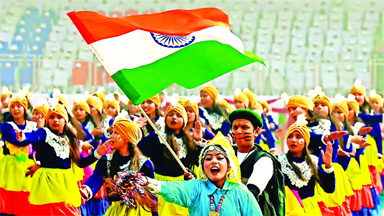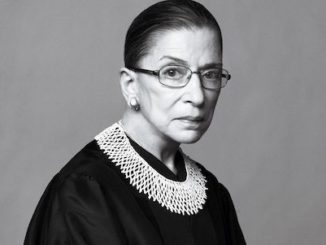
India‘s Republic Day, celebrated annually on January 26, holds profound historical and cultural significance. This day marks the moment in 1950 when the Constitution of India came into effect, replacing the colonial Government of India Act (1935) and establishing India as a sovereign, socialist, secular, and democratic republic. It is a day of national pride and a tribute to the relentless struggles and sacrifices of the Indian people for self-governance and justice.
The Road to Republic Day: Independence and Beyond
India achieved independence from British rule on August 15, 1947. However, the newly independent nation did not have a constitution of its own and continued to be governed under the colonial Government of India Act of 1935. The need for a comprehensive legal framework that would reflect the values, aspirations, and cultural heritage of independent India became evident. To achieve this, the Constituent Assembly of India was formed in 1946, consisting of eminent leaders, thinkers, and visionaries.
The Assembly’s task of drafting the Constitution was both monumental and meticulous. Chaired by Dr. Rajendra Prasad, the Assembly included stalwarts like Dr. B.R. Ambedkar, Jawaharlal Nehru, Sardar Vallabhbhai Patel, Maulana Abul Kalam Azad, and others. Dr. B.R. Ambedkar, as the chairman of the Drafting Committee, played a pivotal role in shaping the Constitution, earning him the title of the “Architect of the Indian Constitution.”
After nearly three years of deliberations, debates, and revisions, the Constituent Assembly adopted the Constitution on November 26, 1949. This date is celebrated annually as Constitution Day. However, the Assembly chose January 26, 1950, as the date for the Constitution to come into effect to honor a historic milestone in India’s freedom struggle.
The Historical Significance of January 26
The choice of January 26 as Republic Day was deeply symbolic. On this day in 1930, the Indian National Congress, under the leadership of Jawaharlal Nehru, declared Purna Swaraj (complete independence) from British rule during its Lahore Session. This declaration was a turning point in India’s struggle for independence, inspiring millions to join the movement for self-rule. By making January 26 the date for the Constitution’s implementation, India’s leaders established a link between the freedom movement and the birth of the republic.
The First Republic Day: A Historic Celebration
India’s first Republic Day on January 26, 1950, was a moment of immense pride and joy. Dr. Rajendra Prasad took the oath as the first President of India, marking the transition of the nation to a fully sovereign republic. The ceremony was held in the Durbar Hall of the Rashtrapati Bhavan, and the event was celebrated with grandeur and enthusiasm across the country.
The first Republic Day Parade was held at Irwin Amphitheatre (now Major Dhyan Chand National Stadium) in New Delhi. It was a modest affair compared to today’s grand spectacle, but it set the precedent for showcasing India’s cultural diversity and military prowess.
The Republic Day Parade: A Symbol of Unity and Pride
The Republic Day Parade at Rajpath in New Delhi has become the centerpiece of the celebrations. It is a vibrant display of India’s cultural heritage, military strength, and technological advancements. The parade includes:
– Military Display: The parade features regiments of the Indian Army, Navy, and Air Force, as well as paramilitary forces. Tanks, missiles, and other defense equipment highlight India’s defense capabilities.
– Cultural Tableaux: Each state and union territory presents a tableau depicting its unique cultural traditions, historical landmarks, and achievements.
– Awards and Honors: The President of India confers prestigious awards such as the Padma Awards, Bharat Ratna, and gallantry awards to individuals and organizations for their exceptional contributions.
– School Performances: Schoolchildren perform colorful dances and drills, symbolizing the country’s unity and vibrancy.
– Flypast: The Indian Air Force concludes the parade with a breathtaking flypast, including formations and maneuvers by fighter jets.
Republic Day Beyond Delhi: Nationwide Celebrations
While the main event takes place in the capital, Republic Day is celebrated with equal fervor across the country. Schools, colleges, and public institutions organize flag-hoisting ceremonies, cultural programs, and patriotic events. The day begins with the President’s address to the nation, followed by flag-hoisting ceremonies and parades in various states. Local communities and organizations also engage in social and cultural activities, emphasizing national unity and pride.
International Participation and Diplomatic Significance
Another unique feature of Republic Day is the presence of a foreign dignitary as the Chief Guest. This tradition began in 1950, with President Sukarno of Indonesia as the first guest of honor. The presence of an international leader highlights India’s diplomatic ties and its growing stature on the global stage. Over the years, leaders from various countries, including the United States, France, Japan, and South Africa, have graced the occasion.
Indonesian President Prabowo Subianto will be the chief guest for Republic Day 2025, marking a significant milestone in the 75th anniversary of diplomatic relations between India and Indonesia.
Reflection and Renewal
Republic Day is more than a celebration; it is a reminder of the responsibilities that come with freedom. The Constitution of India enshrines the principles of justice, liberty, equality, and fraternity, and it is the duty of every citizen to uphold these values. The day also serves as an opportunity to reflect on the progress made by the nation and the challenges that lie ahead. As India continues to progress as the world’s largest democracy, Republic Day serves as a beacon of hope and resilience. It is a day to reflect on the sacrifices made by the nation’s forebears and renew the commitment to building a more equitable, inclusive, and prosperous society.
India’s Republic Day is a celebration of the nation’s achievements and a tribute to its rich history and diverse culture. It is a testament to the strength and unity of the Indian people, reminding them of their shared heritage and the collective responsibility to uphold the ideals of the Constitution. With its blend of tradition and modernity, Republic Day continues to inspire generations, fostering a sense of pride and belonging among all Indians.
Beating the Retreat Ceremony: A Symphony of Tradition and Patriotism
The Beating the Retreat Ceremony is an iconic event that marks the culmination of the Republic Day celebrations in India. Held annually on January 29, this majestic ceremony takes place against the awe-inspiring backdrop of the historic Vijay Chowk in New Delhi. With its grandeur and solemnity, it serves as a fitting finale to the week-long festivities that honor India’s rich heritage and democratic spirit.
Origins of the Beating the Retreat Ceremony
The tradition of Beating the Retreat has its roots in the 16th-century military practice of signaling the end of the day’s battle. Drummers and buglers would sound the retreat, signaling troops to disengage, return to their camps, and lower their flags. The ceremony was later adapted by the British, and India retained this tradition post-independence, imbuing it with its own cultural and patriotic essence.
The Splendor of the Event
The ceremony begins with the President of India, the Supreme Commander of the Armed Forces, arriving at Vijay Chowk. The area, illuminated by floodlights, is transformed into a visual spectacle. The main attraction is the synchronized performance by the bands of the Indian Army, Navy, and Air Force. These bands perform an array of martial tunes, patriotic songs, and classical Indian music, creating a harmonious blend that resonates with the audience.
Key highlights include the soulful rendition of classics like “Abide With Me,” a favorite of Mahatma Gandhi, and the stirring strains of ‘Sare Jahan Se Achha.’ The event concludes with the lowering of the National Flag, accompanied by the playing of the National Anthem. As the flag is lowered, the illuminated Rashtrapati Bhavan, North Block, and South Block provide a mesmerizing backdrop, leaving spectators in awe.
Cultural and Patriotic Significance
The Beating the Retreat Ceremony is more than just a military tradition; it is a celebration of India’s unity in diversity. The music played during the event often includes compositions that reflect the nation’s varied cultural heritage. The ceremony serves as a reminder of the sacrifices made by the armed forces and instills a sense of pride and patriotism among citizens.





Be the first to comment